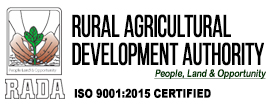Guidelines to assist Livestock Farmers through Drought Periods
A drought occurs when there is no substantial rainfall for a long period of time.
Extreme heat is defined as temperatures 10 degrees or more above the average high temperature, lasting for several weeks. When drought and extreme heat occur at the same time, the conditions can be very dangerous.
Droughts are probably the largest cause of death in livestock throughout the world as limited water supplies occur during a time when the water needs are increased. Feed availability can also become limited. Plants can also concentrate toxins making them lethal to livestock.
Although extreme heat conditions are easily recognized, drought conditions often develop slowly and can only be tracked through local weather advisories.
Planning ahead can help protect the health and well-being of your livestock. These are some useful tips and techniques that can be employed as livestock farmers to reduce the effects of heat stress on the animals.
- Establish alternative sources and supplies of water for your fodder banks/pastures and your animals.
- For large animals, consider creating artificial shade
- Practice good land management
- maintain healthy soils
- manage stocking rates
Preparedness
Livestock farmers should learn to recognize heat impairment symptoms and administer appropriate first aid for animals. Causes of heat stroke or hyperthermia are:
Lack of appropriate shelter for animal
Animals not acclimated to the heat
Excessive exercise in hot and humid weather.
.The signs of heat stress in animals are identified below.
• Excessive panting or difficulty breathing,
• Collapse,
• Increased heart and respiratory rate,
• Salivation, and
• Depression, stupor.
Response
Follow these guidelines when responding during periods of drought and extreme heat:
• Keep animals in areas where they have access to shade.
• Provide animals with plenty of cool water. Hosing off an animal periodically will also help to cool it.
• Animals in cages require special attention because the ventilation may not be very good. Provide caged animals with extra ventilation.
• If there is a shortage of feed, reduce the number of animals to limit demand on feed and water
• Providing supplemental feed (e.g., grains, hay) may be necessary
• Supplemental minerals, vitamins or energy sources may be needed.
• Check animals for illnesses
• Avoid overgrazing
After a drought:
• Continue to conserve water even after the drought appears to have ended.
• Avoid any activities that could result in fires. Trees become prone to fire, even from the slightest spark.
• If you plan to feed drought damaged crops (e.g., feed, forages) to livestock, be aware of these issues:
• Drought conditions can reduce the nutritional quality of forages and lower forage succulence (and protein content).
• Dry forages are harder to digest.
• Drought conditions increases plant toxicities

